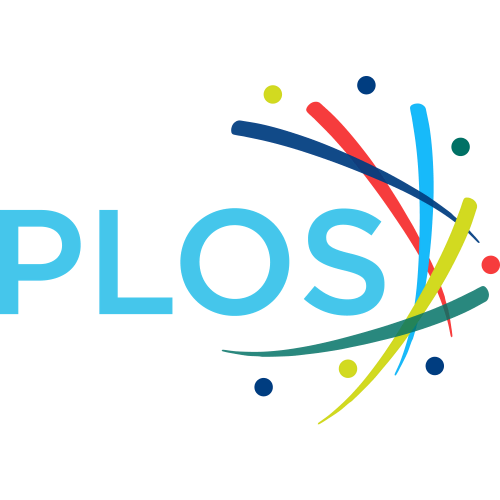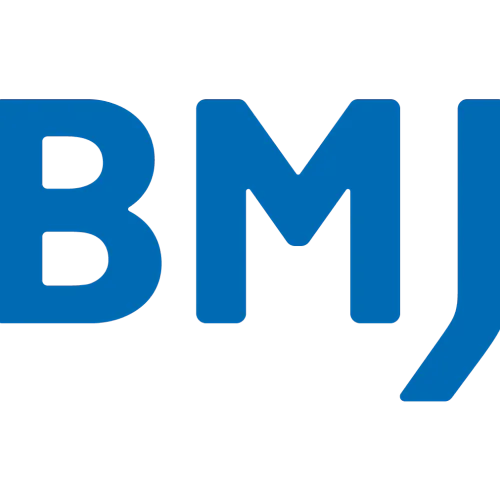Open Access


PLoS ONE, volume 7, issue 12, pages e52020
Changes in the Molecular Phenotype of Nucleus Pulposus Cells with Intervertebral Disc Aging
1
Department of Biomedical Engineering, Duke University, Durham, North Carolina, United States of America
|
2
Department of Orthopedic Surgery, Duke University Medical Center, Durham, North Carolina, United States of America
|
Publication type: Journal Article
Publication date: 2012-12-19
PubMed ID:
23284858
Multidisciplinary
Abstract
Intervertebral disc (IVD) disorder and age-related degeneration are believed to contribute to low back pain. Cell-based therapies represent a promising strategy to treat disc degeneration; however, the cellular and molecular characteristics of disc cells during IVD maturation and aging still remain poorly defined. This study investigated novel molecular markers and their age-related changes in the rat IVD. Affymetrix cDNA microarray analysis was conducted to identify a new set of genes characterizing immature nucleus pulposus (NP) cells. Among these markers, select neuronal-related proteins (Basp1, Ncdn and Nrp-1), transcriptional factor (Brachyury T), and cell surface receptors (CD24, CD90, CD155 and CD221) were confirmed by real-time PCR and immunohistochemical (IHC) staining for differential expression between IVD tissue regions and among various ages (1, 12 and 21 months). NP cells generally possessed higher levels of mRNA or protein expression for all aforementioned markers, with the exception of CD90 in anulus fibrosus (AF) cells. In addition, CD protein (CD24 and CD90) and Brachyury (T) expression in immature disc cells were also confirmed via flow cytometry. Similar to IHC staining, results revealed a higher percentage of immature NP cells expressing CD24 and Brachyury, while higher percentage of immature AF cells was stained positively for CD90. Altogether, this study identifies that tissue-specific gene expression and age-related differential expression of the above markers do exist in immature and aged disc cells. These age-related phenotype changes provide a new insight for a molecular profile that may be used to characterize NP cells for developing cell-based regenerative therapy for IVD regeneration.
Citations by journals
|
1
2
3
4
5
6
7
|
|
|
JOR Spine

|

JOR Spine
7 publications, 9.09%
|
|
Journal of Orthopaedic Research

|

Journal of Orthopaedic Research
5 publications, 6.49%
|
|
Scientific Reports

|

Scientific Reports
4 publications, 5.19%
|
|
International Journal of Molecular Sciences

|

International Journal of Molecular Sciences
3 publications, 3.9%
|
|
Biomaterials

|

Biomaterials
3 publications, 3.9%
|
|
PLoS ONE

|

PLoS ONE
3 publications, 3.9%
|
|
Tissue Engineering - Part A.

|

Tissue Engineering - Part A.
2 publications, 2.6%
|
|
Spine

|

Spine
2 publications, 2.6%
|
|
Nature Communications

|

Nature Communications
2 publications, 2.6%
|
|
Matrix Biology

|

Matrix Biology
2 publications, 2.6%
|
|
Stem Cells International

|

Stem Cells International
2 publications, 2.6%
|
|
Molecular Biology

|

Molecular Biology
1 publication, 1.3%
|
|
Journal of Biomechanical Engineering

|

Journal of Biomechanical Engineering
1 publication, 1.3%
|
|
Medecine/Sciences
|
Medecine/Sciences, 1, 1.3%
Medecine/Sciences
1 publication, 1.3%
|
|
Epigenomics

|

Epigenomics
1 publication, 1.3%
|
|
International Journal of Molecular Medicine

|

International Journal of Molecular Medicine
1 publication, 1.3%
|
|
Molecular Medicine Reports

|

Molecular Medicine Reports
1 publication, 1.3%
|
|
American Journal of Physical Medicine and Rehabilitation

|

American Journal of Physical Medicine and Rehabilitation
1 publication, 1.3%
|
|
Global Spine Journal

|

Global Spine Journal
1 publication, 1.3%
|
|
Journal of Developmental Biology

|

Journal of Developmental Biology
1 publication, 1.3%
|
|
Applied Sciences (Switzerland)

|

Applied Sciences (Switzerland)
1 publication, 1.3%
|
|
Cytotechnology

|

Cytotechnology
1 publication, 1.3%
|
|
European Spine Journal

|

European Spine Journal
1 publication, 1.3%
|
|
Archives of Orthopaedic and Trauma Surgery

|

Archives of Orthopaedic and Trauma Surgery
1 publication, 1.3%
|
|
Cellular and Molecular Bioengineering

|

Cellular and Molecular Bioengineering
1 publication, 1.3%
|
|
Stem Cell Research and Therapy

|

Stem Cell Research and Therapy
1 publication, 1.3%
|
|
Journal of Biomechanics

|

Journal of Biomechanics
1 publication, 1.3%
|
|
Seminars in Cell and Developmental Biology

|

Seminars in Cell and Developmental Biology
1 publication, 1.3%
|
|
Biochemical and Biophysical Research Communications

|

Biochemical and Biophysical Research Communications
1 publication, 1.3%
|
|
1
2
3
4
5
6
7
|
Citations by publishers
|
2
4
6
8
10
12
14
16
|
|
|
Elsevier

|

Elsevier
15 publications, 19.48%
|
|
Wiley

|

Wiley
15 publications, 19.48%
|
|
Springer Nature

|

Springer Nature
11 publications, 14.29%
|
|
Multidisciplinary Digital Publishing Institute (MDPI)

|

Multidisciplinary Digital Publishing Institute (MDPI)
7 publications, 9.09%
|
|
Wolters Kluwer Health

|

Wolters Kluwer Health
3 publications, 3.9%
|
|
Public Library of Science (PLoS)

|

Public Library of Science (PLoS)
3 publications, 3.9%
|
|
Hindawi Limited

|

Hindawi Limited
3 publications, 3.9%
|
|
Mary Ann Liebert

|

Mary Ann Liebert
2 publications, 2.6%
|
|
Spandidos Publications

|

Spandidos Publications
2 publications, 2.6%
|
|
Pleiades Publishing

|

Pleiades Publishing
1 publication, 1.3%
|
|
ASME

|

ASME
1 publication, 1.3%
|
|
Editions E D K
|
Editions E D K, 1, 1.3%
Editions E D K
1 publication, 1.3%
|
|
Future Medicine

|

Future Medicine
1 publication, 1.3%
|
|
SAGE

|

SAGE
1 publication, 1.3%
|
|
Taylor & Francis

|

Taylor & Francis
1 publication, 1.3%
|
|
British Editorial Society of Bone and Joint Surgery
|
British Editorial Society of Bone and Joint Surgery, 1, 1.3%
British Editorial Society of Bone and Joint Surgery
1 publication, 1.3%
|
|
Oxford University Press

|

Oxford University Press
1 publication, 1.3%
|
|
BMJ

|

BMJ
1 publication, 1.3%
|
|
Korean Spinal Neurosurgery Society
|
Korean Spinal Neurosurgery Society, 1, 1.3%
Korean Spinal Neurosurgery Society
1 publication, 1.3%
|
|
Japanese Society for Spine Surgery and Related Research
|
Japanese Society for Spine Surgery and Related Research, 1, 1.3%
Japanese Society for Spine Surgery and Related Research
1 publication, 1.3%
|
|
Portland Press

|

Portland Press
1 publication, 1.3%
|
|
2
4
6
8
10
12
14
16
|
- We do not take into account publications that without a DOI.
- Statistics recalculated only for publications connected to researchers, organizations and labs registered on the platform.
- Statistics recalculated weekly.
{"yearsCitations":{"type":"bar","data":{"show":true,"labels":[2013,2014,2015,2016,2017,2018,2019,2020,2021,2022,2023,2024],"ids":[0,0,0,0,0,0,0,0,0,0,0,0],"codes":[0,0,0,0,0,0,0,0,0,0,0,0],"imageUrls":["","","","","","","","","","","",""],"datasets":[{"label":"Citations number","data":[5,7,6,6,5,11,4,7,6,6,10,4],"backgroundColor":["#3B82F6","#3B82F6","#3B82F6","#3B82F6","#3B82F6","#3B82F6","#3B82F6","#3B82F6","#3B82F6","#3B82F6","#3B82F6","#3B82F6"],"percentage":["6.49","9.09","7.79","7.79","6.49","14.29","5.19","9.09","7.79","7.79","12.99","5.19"],"barThickness":null}]},"options":{"indexAxis":"x","maintainAspectRatio":true,"scales":{"y":{"ticks":{"precision":0,"autoSkip":false,"font":{"family":"Montserrat"},"color":"#000000"}},"x":{"ticks":{"stepSize":1,"precision":0,"font":{"family":"Montserrat"},"color":"#000000"}}},"plugins":{"legend":{"position":"top","labels":{"font":{"family":"Montserrat"},"color":"#000000"}},"title":{"display":true,"text":"Citations per year","font":{"size":24,"family":"Montserrat","weight":600},"color":"#000000"}}}},"journals":{"type":"bar","data":{"show":true,"labels":["JOR Spine","Journal of Orthopaedic Research","Scientific Reports","International Journal of Molecular Sciences","Biomaterials","PLoS ONE","Tissue Engineering - Part A.","Spine","Nature Communications","Matrix Biology","Stem Cells International","Molecular Biology","Journal of Biomechanical Engineering","Medecine\/Sciences","Epigenomics","International Journal of Molecular Medicine","Molecular Medicine Reports","American Journal of Physical Medicine and Rehabilitation","Global Spine Journal","Journal of Developmental Biology","Applied Sciences (Switzerland)","Cytotechnology","European Spine Journal","Archives of Orthopaedic and Trauma Surgery","Cellular and Molecular Bioengineering","Stem Cell Research and Therapy","Journal of Biomechanics","Seminars in Cell and Developmental Biology","Biochemical and Biophysical Research Communications"],"ids":[27195,22248,13767,14627,13732,24963,3218,283,3231,6437,22095,1134,24181,3775,12707,16008,4737,1141,23877,8406,16650,20706,10450,2240,2588,7883,18800,9325,12390],"codes":[0,0,0,0,0,0,0,0,0,0,0,0,0,0,0,0,0,0,0,0,0,0,0,0,0,0,0,0,0],"imageUrls":["\/storage\/images\/resized\/bRyGpdm98BkAUYiK1YFNpl5Z7hPu6Gd87gbIeuG3_medium.webp","\/storage\/images\/resized\/bRyGpdm98BkAUYiK1YFNpl5Z7hPu6Gd87gbIeuG3_medium.webp","\/storage\/images\/resized\/voXLqlsvTwv5p3iMQ8Dhs95nqB4AXOG7Taj7G4ra_medium.webp","\/storage\/images\/resized\/MjH1ITP7lMYGxeqUZfkt2BnVLgjkk413jwBV97XX_medium.webp","\/storage\/images\/resized\/GDnYOu1UpMMfMMRV6Aqle4H0YLLsraeD9IP9qScG_medium.webp","\/storage\/images\/resized\/PRGhlgB4OKRltSNtT39eA6wlnOTGRap1QQ6FQHih_medium.webp","\/storage\/images\/resized\/Zy5YST233rzRbZP24I24MzZm64hz20ZV9qQopmMn_medium.webp","\/storage\/images\/resized\/6QE8LXWrLpkoy5A2te6hw7who46GeCoTYIstuoAz_medium.webp","\/storage\/images\/resized\/voXLqlsvTwv5p3iMQ8Dhs95nqB4AXOG7Taj7G4ra_medium.webp","\/storage\/images\/resized\/GDnYOu1UpMMfMMRV6Aqle4H0YLLsraeD9IP9qScG_medium.webp","\/storage\/images\/resized\/hqfzhQAjTGlNSRs6yzFNITgjSMm9Jr2QuotJHIvE_medium.webp","\/storage\/images\/resized\/oZgeErrVFhuDksyqFURLvYS1wtVSBWczh001igGo_medium.webp","\/storage\/images\/resized\/yKbGpvfNleUTiwBfKt4XcIFlZMo3HgWv1KKVqn4g_medium.webp","","\/storage\/images\/resized\/AN2jnDN59NmKaS4CWLHAGstADL2DbnatQScsFA6C_medium.webp","\/storage\/images\/resized\/8zKfOwdd5XirYzTQfqwp7U8IEQc8ckIOjyYQSBkk_medium.webp","\/storage\/images\/resized\/8zKfOwdd5XirYzTQfqwp7U8IEQc8ckIOjyYQSBkk_medium.webp","\/storage\/images\/resized\/6QE8LXWrLpkoy5A2te6hw7who46GeCoTYIstuoAz_medium.webp","\/storage\/images\/resized\/ruydfaB80LDjlkYqsfOeUAZohOIODyq7bQzis5O7_medium.webp","\/storage\/images\/resized\/MjH1ITP7lMYGxeqUZfkt2BnVLgjkk413jwBV97XX_medium.webp","\/storage\/images\/resized\/MjH1ITP7lMYGxeqUZfkt2BnVLgjkk413jwBV97XX_medium.webp","\/storage\/images\/resized\/voXLqlsvTwv5p3iMQ8Dhs95nqB4AXOG7Taj7G4ra_medium.webp","\/storage\/images\/resized\/voXLqlsvTwv5p3iMQ8Dhs95nqB4AXOG7Taj7G4ra_medium.webp","\/storage\/images\/resized\/voXLqlsvTwv5p3iMQ8Dhs95nqB4AXOG7Taj7G4ra_medium.webp","\/storage\/images\/resized\/voXLqlsvTwv5p3iMQ8Dhs95nqB4AXOG7Taj7G4ra_medium.webp","\/storage\/images\/resized\/voXLqlsvTwv5p3iMQ8Dhs95nqB4AXOG7Taj7G4ra_medium.webp","\/storage\/images\/resized\/GDnYOu1UpMMfMMRV6Aqle4H0YLLsraeD9IP9qScG_medium.webp","\/storage\/images\/resized\/GDnYOu1UpMMfMMRV6Aqle4H0YLLsraeD9IP9qScG_medium.webp","\/storage\/images\/resized\/GDnYOu1UpMMfMMRV6Aqle4H0YLLsraeD9IP9qScG_medium.webp"],"datasets":[{"label":"","data":[7,5,4,3,3,3,2,2,2,2,2,1,1,1,1,1,1,1,1,1,1,1,1,1,1,1,1,1,1],"backgroundColor":["#3B82F6","#3B82F6","#3B82F6","#3B82F6","#3B82F6","#3B82F6","#3B82F6","#3B82F6","#3B82F6","#3B82F6","#3B82F6","#3B82F6","#3B82F6","#3B82F6","#3B82F6","#3B82F6","#3B82F6","#3B82F6","#3B82F6","#3B82F6","#3B82F6","#3B82F6","#3B82F6","#3B82F6","#3B82F6","#3B82F6","#3B82F6","#3B82F6","#3B82F6"],"percentage":[9.09,6.49,5.19,3.9,3.9,3.9,2.6,2.6,2.6,2.6,2.6,1.3,1.3,1.3,1.3,1.3,1.3,1.3,1.3,1.3,1.3,1.3,1.3,1.3,1.3,1.3,1.3,1.3,1.3],"barThickness":13}]},"options":{"indexAxis":"y","maintainAspectRatio":false,"scales":{"y":{"ticks":{"precision":0,"autoSkip":false,"font":{"family":"Montserrat"},"color":"#000000"}},"x":{"ticks":{"stepSize":null,"precision":0,"font":{"family":"Montserrat"},"color":"#000000"}}},"plugins":{"legend":{"position":"top","labels":{"font":{"family":"Montserrat"},"color":"#000000"}},"title":{"display":true,"text":"Journals","font":{"size":24,"family":"Montserrat","weight":600},"color":"#000000"}}}},"publishers":{"type":"bar","data":{"show":true,"labels":["Elsevier","Wiley","Springer Nature","Multidisciplinary Digital Publishing Institute (MDPI)","Wolters Kluwer Health","Public Library of Science (PLoS)","Hindawi Limited","Mary Ann Liebert","Spandidos Publications","Pleiades Publishing","ASME","Editions E D K","Future Medicine","SAGE","Taylor & Francis","British Editorial Society of Bone and Joint Surgery","Oxford University Press","BMJ","Korean Spinal Neurosurgery Society","Japanese Society for Spine Surgery and Related Research","Portland Press"],"ids":[17,11,8,202,32,344,6921,230,1097,101,6977,1381,6949,31,18,1169,19,6954,4701,6099,801],"codes":[0,0,0,0,0,0,0,0,0,0,0,0,0,0,0,0,0,0,0,0,0],"imageUrls":["\/storage\/images\/resized\/GDnYOu1UpMMfMMRV6Aqle4H0YLLsraeD9IP9qScG_medium.webp","\/storage\/images\/resized\/bRyGpdm98BkAUYiK1YFNpl5Z7hPu6Gd87gbIeuG3_medium.webp","\/storage\/images\/resized\/voXLqlsvTwv5p3iMQ8Dhs95nqB4AXOG7Taj7G4ra_medium.webp","\/storage\/images\/resized\/MjH1ITP7lMYGxeqUZfkt2BnVLgjkk413jwBV97XX_medium.webp","\/storage\/images\/resized\/6QE8LXWrLpkoy5A2te6hw7who46GeCoTYIstuoAz_medium.webp","\/storage\/images\/resized\/PRGhlgB4OKRltSNtT39eA6wlnOTGRap1QQ6FQHih_medium.webp","\/storage\/images\/resized\/hqfzhQAjTGlNSRs6yzFNITgjSMm9Jr2QuotJHIvE_medium.webp","\/storage\/images\/resized\/Zy5YST233rzRbZP24I24MzZm64hz20ZV9qQopmMn_medium.webp","\/storage\/images\/resized\/8zKfOwdd5XirYzTQfqwp7U8IEQc8ckIOjyYQSBkk_medium.webp","\/storage\/images\/resized\/oZgeErrVFhuDksyqFURLvYS1wtVSBWczh001igGo_medium.webp","\/storage\/images\/resized\/yKbGpvfNleUTiwBfKt4XcIFlZMo3HgWv1KKVqn4g_medium.webp","","\/storage\/images\/resized\/AN2jnDN59NmKaS4CWLHAGstADL2DbnatQScsFA6C_medium.webp","\/storage\/images\/resized\/ruydfaB80LDjlkYqsfOeUAZohOIODyq7bQzis5O7_medium.webp","\/storage\/images\/resized\/5YZtvLvkPZuc2JHOaZsjCvGSHFCuC3drUwN3YAc5_medium.webp","","\/storage\/images\/resized\/yNSijlgQghQF53VZuyFLA30CKDe4j3HK74Vtpnxa_medium.webp","\/storage\/images\/resized\/hysFKdIDQMKHPbF1uLxJ3M6dQA4gPVuC6ZeA7m5a_medium.webp","","","\/storage\/images\/resized\/nUqNrP9GnM1t0BrAIXp1LBodjU8aIJ2Fk4pLfGhZ_medium.webp"],"datasets":[{"label":"","data":[15,15,11,7,3,3,3,2,2,1,1,1,1,1,1,1,1,1,1,1,1],"backgroundColor":["#3B82F6","#3B82F6","#3B82F6","#3B82F6","#3B82F6","#3B82F6","#3B82F6","#3B82F6","#3B82F6","#3B82F6","#3B82F6","#3B82F6","#3B82F6","#3B82F6","#3B82F6","#3B82F6","#3B82F6","#3B82F6","#3B82F6","#3B82F6","#3B82F6"],"percentage":[19.48,19.48,14.29,9.09,3.9,3.9,3.9,2.6,2.6,1.3,1.3,1.3,1.3,1.3,1.3,1.3,1.3,1.3,1.3,1.3,1.3],"barThickness":13}]},"options":{"indexAxis":"y","maintainAspectRatio":false,"scales":{"y":{"ticks":{"precision":0,"autoSkip":false,"font":{"family":"Montserrat"},"color":"#000000"}},"x":{"ticks":{"stepSize":null,"precision":0,"font":{"family":"Montserrat"},"color":"#000000"}}},"plugins":{"legend":{"position":"top","labels":{"font":{"family":"Montserrat"},"color":"#000000"}},"title":{"display":true,"text":"Publishers","font":{"size":24,"family":"Montserrat","weight":600},"color":"#000000"}}}}}
Metrics
Cite this
GOST |
RIS |
BibTex |
MLA
Cite this
GOST
Copy
Tang X., Jing L., Chen J. Changes in the Molecular Phenotype of Nucleus Pulposus Cells with Intervertebral Disc Aging // PLoS ONE. 2012. Vol. 7. No. 12. p. e52020.
GOST all authors (up to 50)
Copy
Tang X., Jing L., Chen J. Changes in the Molecular Phenotype of Nucleus Pulposus Cells with Intervertebral Disc Aging // PLoS ONE. 2012. Vol. 7. No. 12. p. e52020.
Cite this
RIS
Copy
TY - JOUR
DO - 10.1371/journal.pone.0052020
UR - https://doi.org/10.1371%2Fjournal.pone.0052020
TI - Changes in the Molecular Phenotype of Nucleus Pulposus Cells with Intervertebral Disc Aging
T2 - PLoS ONE
AU - Tang, Xinyan
AU - Jing, Liufang
AU - Chen, Jun
PY - 2012
DA - 2012/12/19 00:00:00
PB - Public Library of Science (PLoS)
SP - e52020
IS - 12
VL - 7
PMID - 23284858
SN - 1932-6203
ER -
Cite this
BibTex
Copy
@article{2012_Tang,
author = {Xinyan Tang and Liufang Jing and Jun Chen},
title = {Changes in the Molecular Phenotype of Nucleus Pulposus Cells with Intervertebral Disc Aging},
journal = {PLoS ONE},
year = {2012},
volume = {7},
publisher = {Public Library of Science (PLoS)},
month = {dec},
url = {https://doi.org/10.1371%2Fjournal.pone.0052020},
number = {12},
pages = {e52020},
doi = {10.1371/journal.pone.0052020}
}
Cite this
MLA
Copy
Tang, Xinyan, et al. “Changes in the Molecular Phenotype of Nucleus Pulposus Cells with Intervertebral Disc Aging.” PLoS ONE, vol. 7, no. 12, Dec. 2012, p. e52020. https://doi.org/10.1371%2Fjournal.pone.0052020.
